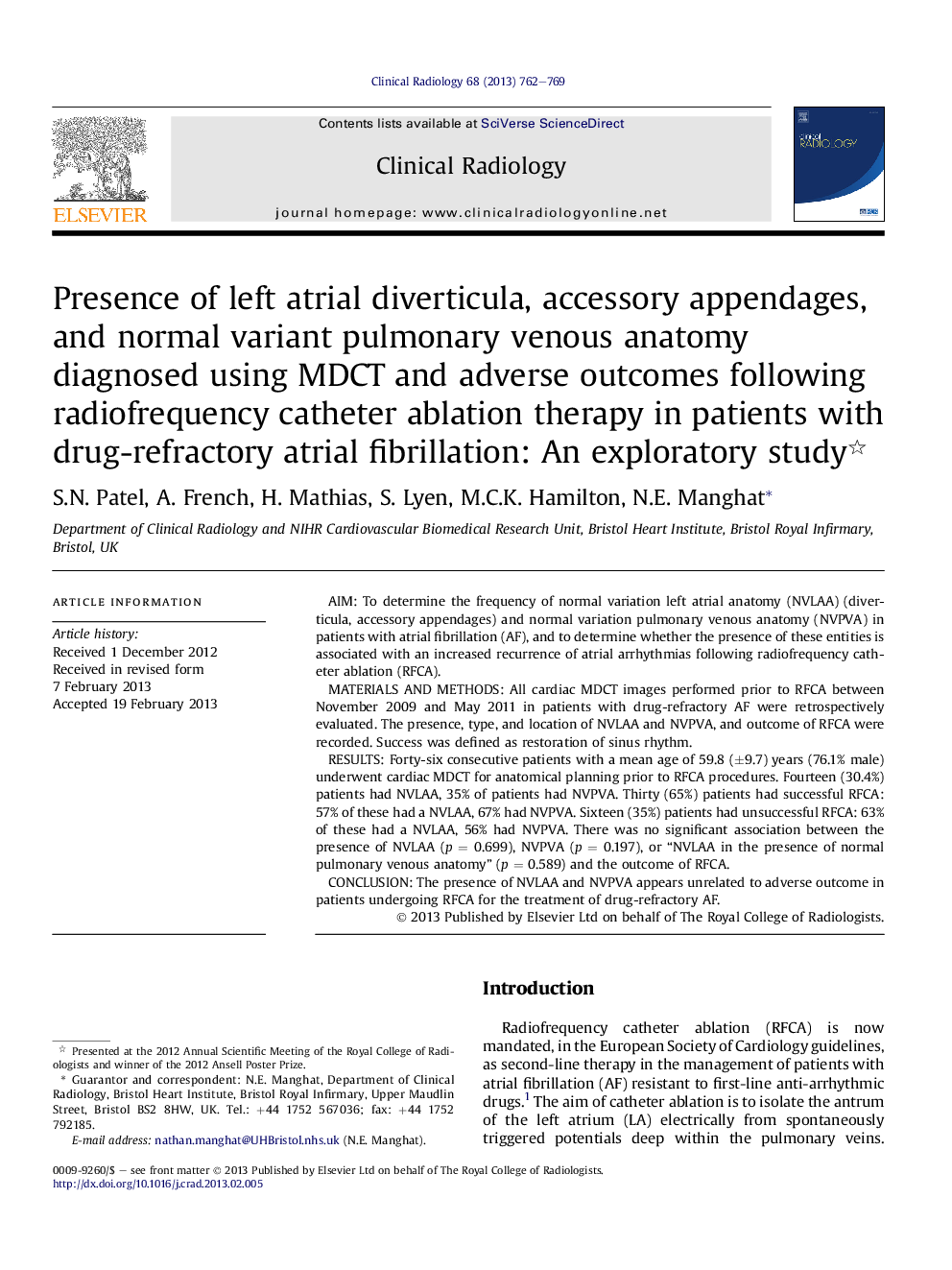| Article ID | Journal | Published Year | Pages | File Type |
|---|---|---|---|---|
| 6190895 | Clinical Radiology | 2013 | 8 Pages |
AimTo determine the frequency of normal variation left atrial anatomy (NVLAA) (diverticula, accessory appendages) and normal variation pulmonary venous anatomy (NVPVA) in patients with atrial fibrillation (AF), and to determine whether the presence of these entities is associated with an increased recurrence of atrial arrhythmias following radiofrequency catheter ablation (RFCA).Materials and methodsAll cardiac MDCT images performed prior to RFCA between November 2009 and May 2011 in patients with drug-refractory AF were retrospectively evaluated. The presence, type, and location of NVLAA and NVPVA, and outcome of RFCA were recorded. Success was defined as restoration of sinus rhythm.ResultsForty-six consecutive patients with a mean age of 59.8 (±9.7) years (76.1% male) underwent cardiac MDCT for anatomical planning prior to RFCA procedures. Fourteen (30.4%) patients had NVLAA, 35% of patients had NVPVA. Thirty (65%) patients had successful RFCA: 57% of these had a NVLAA, 67% had NVPVA. Sixteen (35%) patients had unsuccessful RFCA: 63% of these had a NVLAA, 56% had NVPVA. There was no significant association between the presence of NVLAA (p = 0.699), NVPVA (p = 0.197), or “NVLAA in the presence of normal pulmonary venous anatomy” (p = 0.589) and the outcome of RFCA.ConclusionThe presence of NVLAA and NVPVA appears unrelated to adverse outcome in patients undergoing RFCA for the treatment of drug-refractory AF.
